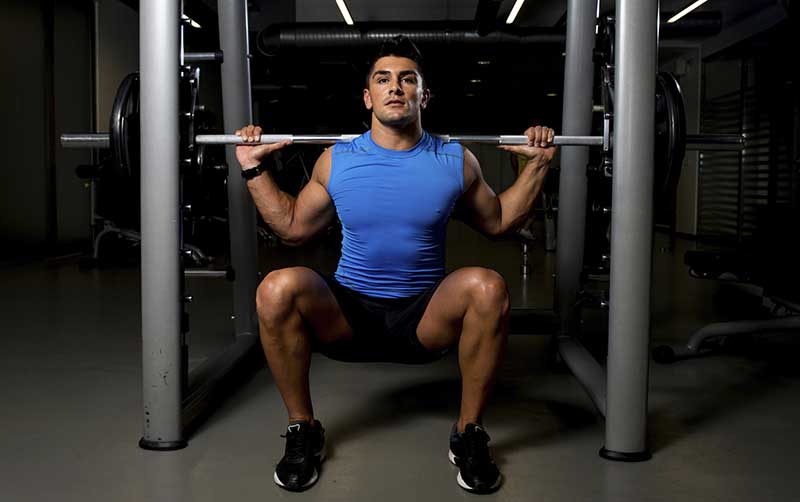Are Restrictions Post Discectomy Necessary?
After lumbar disk surgery, there is a common misconception that all future activities must be restricted. More and more evidence indicates that the vast majority of post lumbar discectomy patients can and should be able to return back to all activities.
Medical Science is a constant evolution of thoughts and processes. Thirty years ago, patients were admitted to hospitals for procedures such as carpal tunnel surgery. They stayed admitted until the wound was healed. Now, select patients are getting knees replaced on an outpatient basis.
Likewise, there is a change in post surgical management, and post surgical activity recommendations.
Traditionally, post lumbar discectomy patients were placed under protective restrictions. Some recommended bedrest. Others restricted any future lifting of any significant weight. Traditional post lumbar discectomy therapy regimens varied from no therapy, to delaying therapy for the first six weeks.
Meta analysis of various papers regarding post lumbar discectomy activities restrictions, and post lumbar discectomy rehabilitation has been essentially inconclusive about the necessity of either process.
Many physicians, including myself, encourage post lumbar discectomy patients to return back to all activities within 4-6 weeks. Also, from the stand point of costs and the need for formal therapy, most analysis conclude there is no difference in outcomes for post lumbar discectomy patients, with or without formal physical therapy.
I am not suggesting Physical Therapy is not helpful for spine patients. But in terms of improving the patient after lumbar discectomy surgery, there is no identifiable advantage. In theory, the reason the patient had surgery, the herniated disk , has now been removed. Therapy is no longer necessary for the nerve dysfunction.
In terms of activities restrictions, once the offending disk herniation has been removed, the irritated nerve now has the ability to recover. After recovery, restrictions are not needed.
Some patients do have recurrent disk herniations and recurrent pains. Some will blame the surgery for the recurrence of symptoms. But, the truth is, the recurrent disk herniation is not secondary to the surgery, but rather because the original reason for the first disk herniation is still present. The tear in the annulus, and the dessication of the disk is a continuing process. Reherniation will occur regardless of the surgery in most situation ( be aware, there is a study indication some types of discectomy surgery is associated with increased rates of reherniation, but most will agree, the root cause of disk herniations is still secondary to the original cause of the herniation, rather than a specific technique).
If you are to have Lumbar Discectomy Surgery, it is highly likely that you will be able to return back to ALL activities. Ultimately, however, you need to speak to your Surgeon to determine if you should get back to everything. Sometimes, your Surgeon may have another concern that will necessitate activities caution.
REFERENCES:
1. Spine (Phila Pa 1976). 1999 Nov 15;24(22):2346-51.
Activity restrictions after posterior lumbar discectomy. A prospective study of outcomes in 152 cases with no postoperative restrictions.
Carragee EJ1, Han MY, Yang B, Kim DH, Kraemer H, Billys J.
2. Spine (Phila Pa 1976). 2008 Jan 1;33(1):33-8. doi: 10.1097/BRS.0b013e31815e3a42.
The outcomes of lumbar microdiscectomy in a young, active population: correlation by herniation type and level.
Dewing CB1, Provencher MT, Riffenburgh RH, Kerr S, Manos RE.
Am J Sports Med. 2011 Mar;39(3):632-6. doi: 10.1177/0363546510388901. Epub 2011 Jan 10.
Return-to-play rates in National Football League linemen after treatment for lumbar disk herniation.
Weistroffer JK1, Hsu WK.
3. Cochrane Database Syst Rev. 2014 Mar 14;3:CD003007. doi: 10.1002/14651858.CD003007.pub3.
Rehabilitation after lumbar disc surgery.
Spine (Phila Pa 1976). 2003 Feb 1;28(3):209-18.
Rehabilitation following first-time lumbar disc surgery: a systematic review within the framework of the cochrane collaboration.
Ostelo RW1, de Vet HC, Waddell G, Kerckhoffs MR, Leffers P, van Tulder M.
Last modified: January 5, 2018











I think advancing my activity as tolerated is best. Walking is painful but I feel better after walking. I have used tennis balls in a sock under my buttocks and it helps with the pain and muscle spasms.
Stretching and walking is the best. Expect two steps forward, but an occasional step backwards. Have confidence that it will get better.
It’s hard to search out educated folks on this subject, however you sound like you recognize what you’re speaking about! Thanks http://hellowh983mm.com
Thank you.